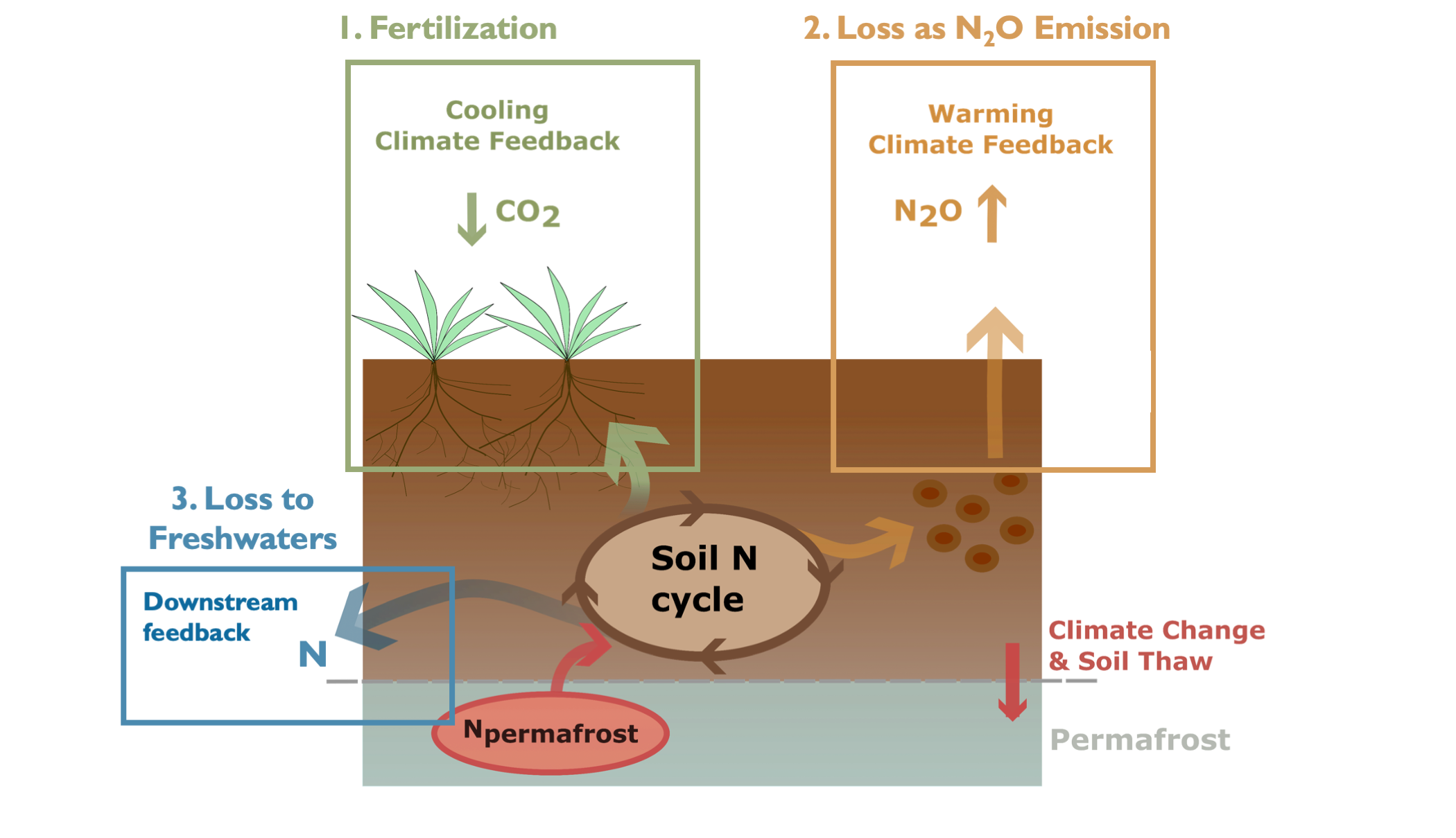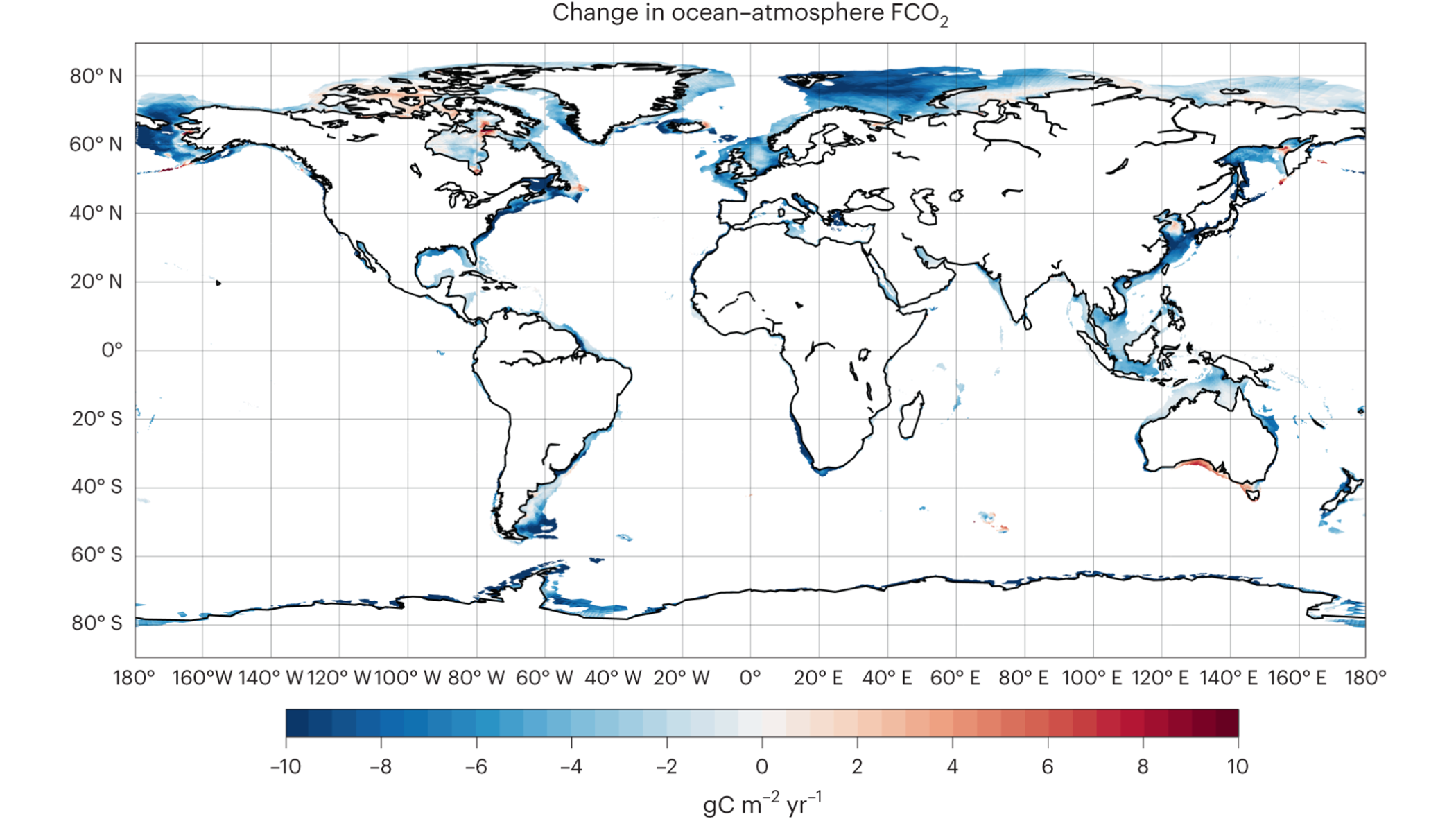Projects
Past and Future Perturbation of Pan Arctic Nitrogen Cycling (PanArcN)
The Arctic region is undergoing severe change due to disproportionate warming and permafrost thaw. In the PanArcN subgroup, we are investigating how release of nitrogen-rich permafrost organic matter affect greenhouse exchange over the pan-Arctic region, and its implication for climate change feedbacks. We are applying observational-based relationships to the next-generation QUINCY-ICON-LAND model. We are also taking part in a joint campaign with the Q-ARCTIC project to advance spatial quantifications of the N2O flux.

Climate Reversibility of Overshoot
Overshooting the 1.5 °C of global warming set in the Paris Agreement is growing increasingly likely. By applying global Earth System models in novel scenarios, I am collaborating with Thomas Frölicher and Regina Rodrigues to better understand the reversibility of climate change impacts under overshoot scenarios.

Impacts of Global Eutrophication for Coastal Ocean Greenhouse Gases and Ecosystem
I am leading a paper on impacts of combined changes in climate and human-induced eutrophication for the coastal ocean ecosystem. Our results show a stronger perturbation of ecosystem indicators in the coastal ocean with respect to the global ocean, with river-induced eutrophication responsible for significant change in globally-averaged biologicaly productivity.

River-2-Ocean MIP
As a key collaborator in the River-2-Ocean Model Intercomparison Project, we are seeking to better quantify the influence of rivers on the global ocean CO2 flux. We thereby have provided a novel protocol and river forcing dataset to better quantify river-induced CO2 outgassing. The protocol consists of a preindustrial part, where reference model simulation and a simulation accounting for river effects are performed, as well as simulations with changing climate, atmospheric CO2 and river C, N and P inputs to the ocean.